※This article was published at March 2015.※
There are all sorts of different types of udon from the various regions of Japan to try, as well as a variety of different udon dishes.

Sanuki Udon
These udon from Kagawa Prefecture are probably the most famous of all!
Sanuki is an old name for Kagawa, which has such a deep-rooted udon history that it’s sometimes called “Udon Prefecture!”
The noodles are full-bodied and quite thick.
They’re usually prepared simply so as not to mask their flavor, such as with a rich soup made using iriko (dried anchovies or sardines,) freshly boiled and together with soy sauce, or mixed with a raw egg (“Kaketama.”)
The most popular topping for them is chikuwa-ten (tempura made with chikuwa, tube-shaped fish cakes.)
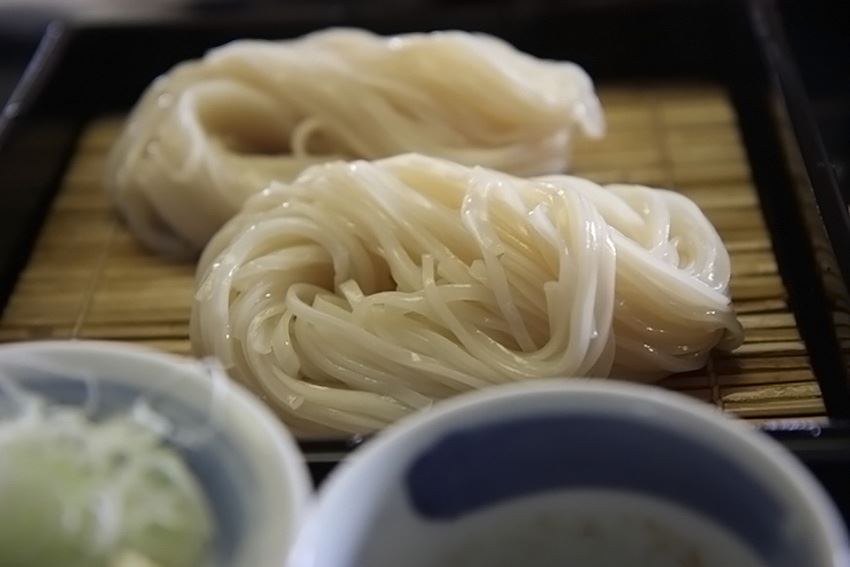
Inaniwa Udon
These are Inaniwa Udon, a local specialty from Akita Prefecture.
They’re flat, and quite thin, with a refined texture.
Just by looking at their smooth, sleek appearance, you can tell they’re going to be delicious!
Udon is often thought of as a working class food, but Inaniwa Udon are anything but—they’re high-class udon, often given as gifts, and are served up at ryotei (traditional Japanese luxury restaurants.)
The ones in the photo are served cold, but they’re eaten together with a warm soup, too.

Kishimen
Flat Kishimen noodles are a local specialty from Nagoya City in Aichi Prefecture.
Strictly speaking, they’re a little different from udon, but they’re related.
They’re commonly served with soup made from katsuobushi (dried bonito) together with a katsuobushi garnish.
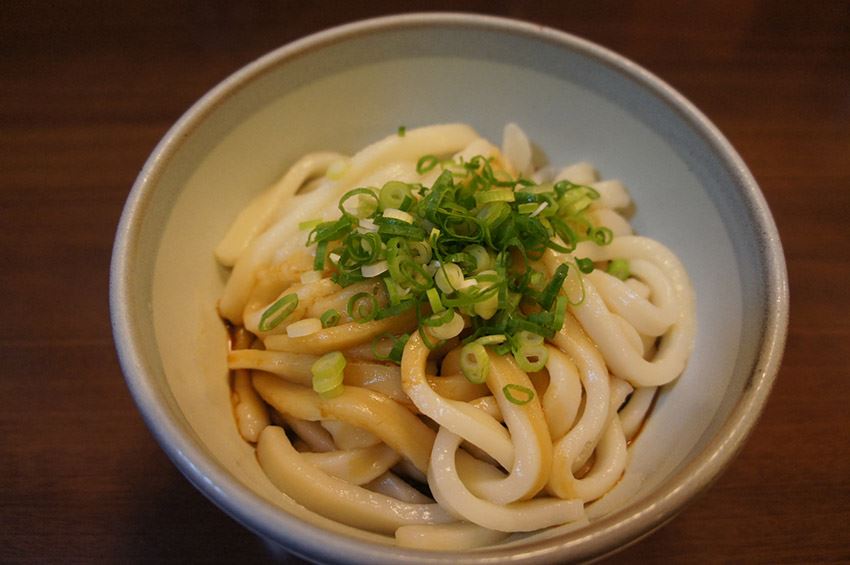
Ise Udon
Ise Udon are a local specialty from Ise City in Mie Prefecture, the home of Ise Grand Shrine.
The noodles are very thick, around 1cm in diameter, and are usually served with a thick, black tsuyu sauce.
The thick noodles are slowly boiled until they’re soft, making them light and airy on the outside and springy on the inside.
They’re usually accompanied by a simple garnish, such as sliced spring onions only.

Photo provided by Fukuoka City
Hakata Udon
One theory says that Fukuoka City in Fukuoka Prefecture is the place where udon first arrived in Japan.
Hakata Udon are most noted for their light, airy texture.
They’re served with a clear soup that’s usually made with katsuo (bonito), kombu (a type of edible kelp,) or flying fish.
Their toppings are also unique: Gobo-ten (great burdock tempura) and Maruten (tempura made from minced fish,) are popular ones.
I also recommend getting some kashiwa-meshi (chicken-seasoned rice) to go with your udon.
As well as all the local udon varieties, there’s also a wide range of different udon dishes.
Next, I’m going to introduce some of the ones best suited to eating in the winter!
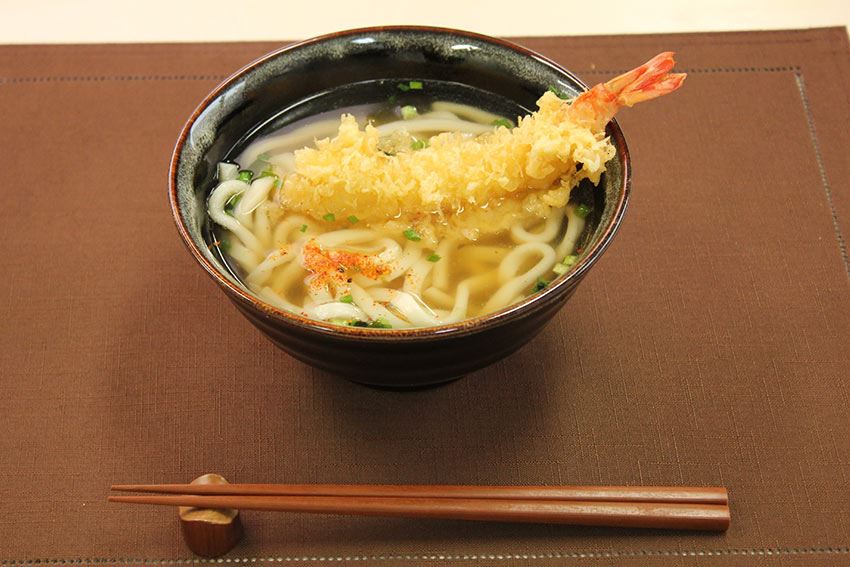
Tempura Udon
The most common topping for udon is definitely tempura.
In particular, ebi-ten (shrimp tempura) is a classic.
It’s a little more expensive than other toppings, but a lot of people love it.

Nabeyaki Udon
Now this is the udon for winter!
The udon noodles and toppings are simmered in a small, single-serving nabe bowl.
It’s served piping hot, so is guaranteed to warm you up!
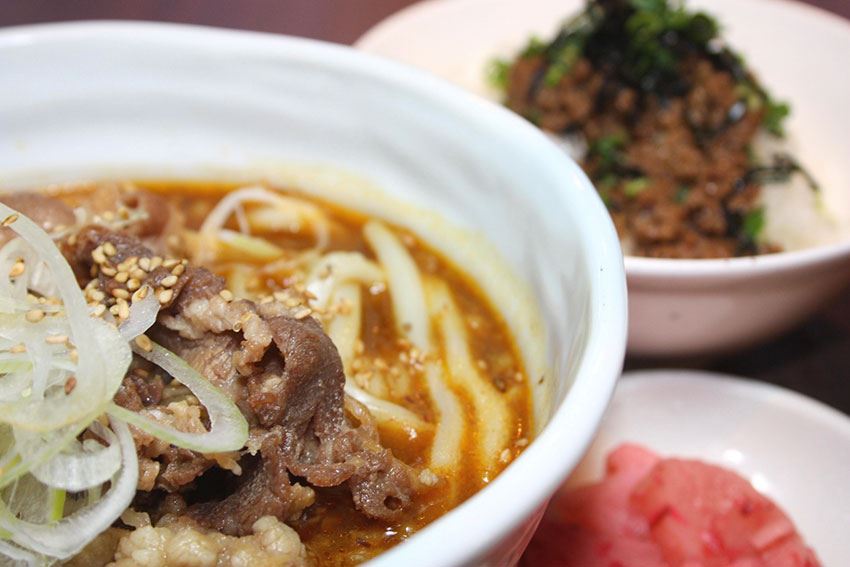
Curry Udon
Japanese people love curry—they even mix it with udon!
The combination of curry and Japanese dashi stock makes for a unique taste.
The spices also warm your body.
Japan’s udon culture is certainly very varied, such as the way the taste of the soup differs between the Kanto and Kansai regions.
If you’re going to be travelling across Japan, try comparing the different udon in each region!
When you think of Japanese noodles, do you first think of ramen?
Well, although ramen is very popular, it’s udon that’s really adored by Japanese people of all ages and generations.There are all sorts of different types of udon from the various regions of Japan to try, as well as a variety of different udon dishes.

Sanuki Udon
These udon from Kagawa Prefecture are probably the most famous of all!
Sanuki is an old name for Kagawa, which has such a deep-rooted udon history that it’s sometimes called “Udon Prefecture!”
The noodles are full-bodied and quite thick.
They’re usually prepared simply so as not to mask their flavor, such as with a rich soup made using iriko (dried anchovies or sardines,) freshly boiled and together with soy sauce, or mixed with a raw egg (“Kaketama.”)
The most popular topping for them is chikuwa-ten (tempura made with chikuwa, tube-shaped fish cakes.)

Inaniwa Udon
These are Inaniwa Udon, a local specialty from Akita Prefecture.
They’re flat, and quite thin, with a refined texture.
Just by looking at their smooth, sleek appearance, you can tell they’re going to be delicious!
Udon is often thought of as a working class food, but Inaniwa Udon are anything but—they’re high-class udon, often given as gifts, and are served up at ryotei (traditional Japanese luxury restaurants.)
The ones in the photo are served cold, but they’re eaten together with a warm soup, too.

Kishimen
Flat Kishimen noodles are a local specialty from Nagoya City in Aichi Prefecture.
Strictly speaking, they’re a little different from udon, but they’re related.
They’re commonly served with soup made from katsuobushi (dried bonito) together with a katsuobushi garnish.

Ise Udon
Ise Udon are a local specialty from Ise City in Mie Prefecture, the home of Ise Grand Shrine.
The noodles are very thick, around 1cm in diameter, and are usually served with a thick, black tsuyu sauce.
The thick noodles are slowly boiled until they’re soft, making them light and airy on the outside and springy on the inside.
They’re usually accompanied by a simple garnish, such as sliced spring onions only.

Photo provided by Fukuoka City
Hakata Udon
One theory says that Fukuoka City in Fukuoka Prefecture is the place where udon first arrived in Japan.
Hakata Udon are most noted for their light, airy texture.
They’re served with a clear soup that’s usually made with katsuo (bonito), kombu (a type of edible kelp,) or flying fish.
Their toppings are also unique: Gobo-ten (great burdock tempura) and Maruten (tempura made from minced fish,) are popular ones.
I also recommend getting some kashiwa-meshi (chicken-seasoned rice) to go with your udon.
As well as all the local udon varieties, there’s also a wide range of different udon dishes.
Next, I’m going to introduce some of the ones best suited to eating in the winter!

Tempura Udon
The most common topping for udon is definitely tempura.
In particular, ebi-ten (shrimp tempura) is a classic.
It’s a little more expensive than other toppings, but a lot of people love it.

Nabeyaki Udon
Now this is the udon for winter!
The udon noodles and toppings are simmered in a small, single-serving nabe bowl.
It’s served piping hot, so is guaranteed to warm you up!

Curry Udon
Japanese people love curry—they even mix it with udon!
The combination of curry and Japanese dashi stock makes for a unique taste.
The spices also warm your body.
Japan’s udon culture is certainly very varied, such as the way the taste of the soup differs between the Kanto and Kansai regions.
If you’re going to be travelling across Japan, try comparing the different udon in each region!
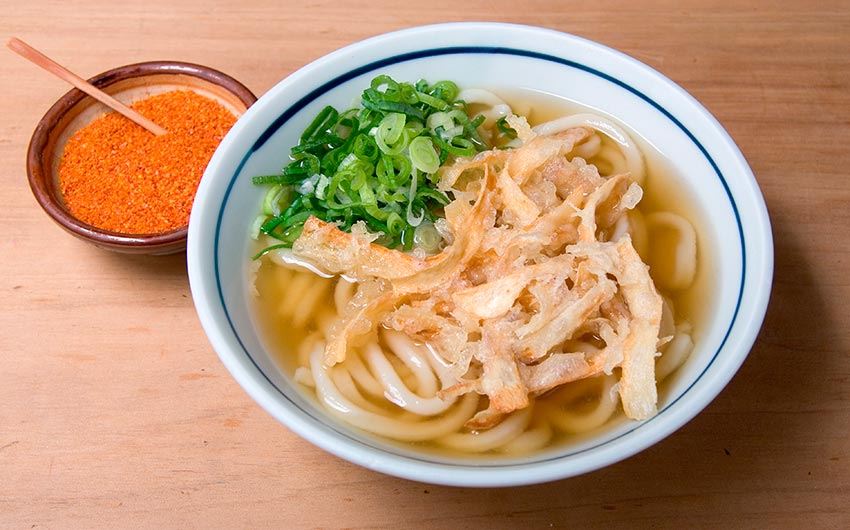
Comments